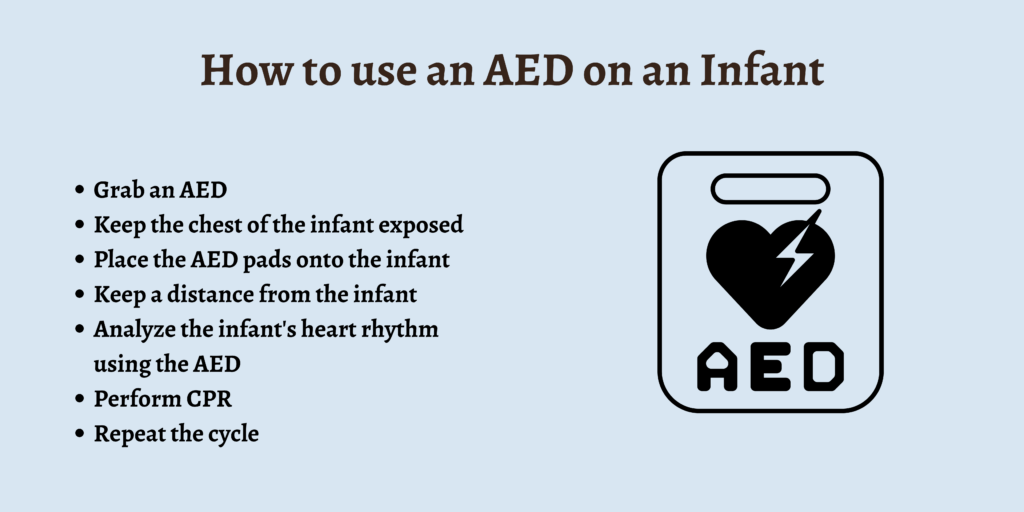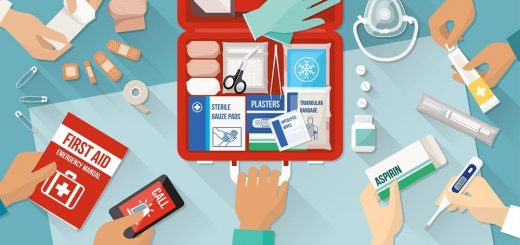AED Pad Placement for Infants: Step-by-Step Guide
As per the American Heart Association, pediatric attenuated pads should be used on infants and kids under the age of eight. I believe that knowing how to use an AED on an infant can help you save an infant going through a sudden cardiac arrest.
Automated external defibrillator pads or AED pads are a significant part of any AED setup that is required to execute defibrillation successfully among the victims of cardiac arrest.
AEDs are imperative in moments of life-threatening cardiac arrests. However, one must remember that it’s important to know how to use an AED correctly on an infant. This is because pediatric AED pads differ from adult AED pads.
Did you know that adult AED pads should not be used on anyone who weighs less than 55 pounds? Being aware of such crucial details is the first step to learning how to use an AED on an infant, which is what we will be discussing today.
In this article, we will explore the step-by-step guide for using an AED on an infant, how to prepare an infant before using an AED on them, and what to do if pediatric AEDs aren’t available.
How to use an AED on an Infant

The following is a step-by-step guide on how to use an AED on an infant:
- Grab an AED: Most public offices and buildings have AEDs available on the premises. After securing an AED, remove it from its case and immediately switch on the device. There are step-by-step audible instructions available with every AED.
- Keep the chest of the infant exposed: Make sure the infant’s chest is dry. Wipe it, if required, and peel away any existing medication patches.
- Place the AED pads onto the infant: Place one of the adhesive electrode pads on the infant’s upper left chest and the other one on the infant’s back. If the pads happen to touch the chest of the infant, apply one of them on the infant’s posterior and the other on the anterior chest.
- Keep a distance from the infant: Once the AED pads have been correctly attached to the infant, stop doing CPR and ask anyone surrounding the infant to move away from them. Don’t touch the infant while their heart rhythm gets checked by the AED.
- Analyze the infant’s heart rhythm using the AED: Follow the instructions provided by the AED. If the device reads ‘check electrodes,’ ensure that the electrodes are in contact with one another. If it reads ‘shock,’ keep holding the flashing shock button until the release of the defibrillation shock.
- Perform CPR: Don’t remove the AED pads from the infant’s body. Resume the chest compressions and rescue breaths, the rate of which should be at least 100 to 120 compressions per minute. As you do this, the infant’s heart rhythm will continue to be checked by the AED. Stay with the infant as they respond. Ensure the infant is warm and comfortable until the arrival of medical help.
- Repeat the cycle: Continue performing CPR with the instructions provided by the AED in case the infant doesn’t respond. Keep doing this until the emergency medical services get to the scene or until the infant’s heart has a normal rhythm.
How to Prepare an Infant for AED Pad Placement
When you’re preparing to place an automated external defibrillator (AED) pad on an infant in the event of a cardiac arrest, make sure to place the AED pads on them as per the instructions given by the AED.
These instructions are present both in a verbal form from the device itself as well as through an image that can be found on the electrode pads. In order to maintain a child’s heartbeat, it’s crucial to perform infant CPR while an AED is being used on them.
Following this, the infant’s heart rhythm is analyzed using an AED, which also helps in determining if a shock is necessary. In case a shock is required, an electrical current will be provided by the AED so that the infant’s normal heart rhythm is restored.
One must pay careful attention to how the AED pads are placed on the infant, and the only way to maximize the possibility of successful AED shock delivery is by performing infant CPR properly.
What If Pediatric Pads Are Unavailable?
There could be situations where pediatric AED pads are not available. In these situations, you will have to improvise and turn to adult AED pads as an alternative.
Place the AED pads in a manner such that they cover the infant’s chest as much as possible, and make sure that there is proper contact and adhesion.
Although such improvisations are unavoidable in cases of unavailability of pediatric AED pads, you should remember that pediatric-specific pads are designed specifically for infants while keeping their needs and size in mind.
FAQs
Can you use child AED pads on an infant?
Yes, child AED pads can be used on infants as long as the pediatric pads are made in a manner such that they can be used on infants and children whose weight is lower than 55 pounds.
Can you cut AED pads to fit a child?
No, AED pads should never be cut, as it’s dangerous to do so. They can lead to unreliable results and improper treatment.
Is it OK to use pediatric AED pads on adults?
No, pediatric AED pads shouldn’t be used on adults as their energy output is lower, and the shocks can be ineffective. Therefore, use an adult AED only on someone over the age of eight and who weighs over 55 pounds.
How do AED pads differ between adults and children?
While adult AED pads put out 150 joules, pediatric AED pads usually put out 50 joules and, therefore, provide a smaller shock.
How common is sudden cardiac arrest among infants?
Sudden cardiac arrest and sudden cardiac death are relatively uncommon among infants, with an estimate of about 1 to 3 cases per 100,000 children. However, it is still important to know how to use an AED properly on infants and the right way to place it on them.
What is an automated external defibrillator?
An automated external defibrillator, or AED, is a portable lifesaving medical device that is used on victims of sudden cardiac arrest. It helps in checking the victim’s heartbeat and aids in delivering a shock till their normal heart rhythm is restored.
Conclusion
Cardiac arrests are quite uncommon in children. However, as per the Children’s Hospital of Philadelphia, while cardiac arrests are not common among kids, anyone can be affected by it, even if they are physically healthy.
More than 2,000 children and adolescents in the United States die every year due to a sudden cardiac arrest, with 10-15% of them being infants. It’s through CPR and AEDs that these sudden deaths can be prevented, especially when they are administered anywhere between three to five minutes after the child experiences cardiac arrest.




